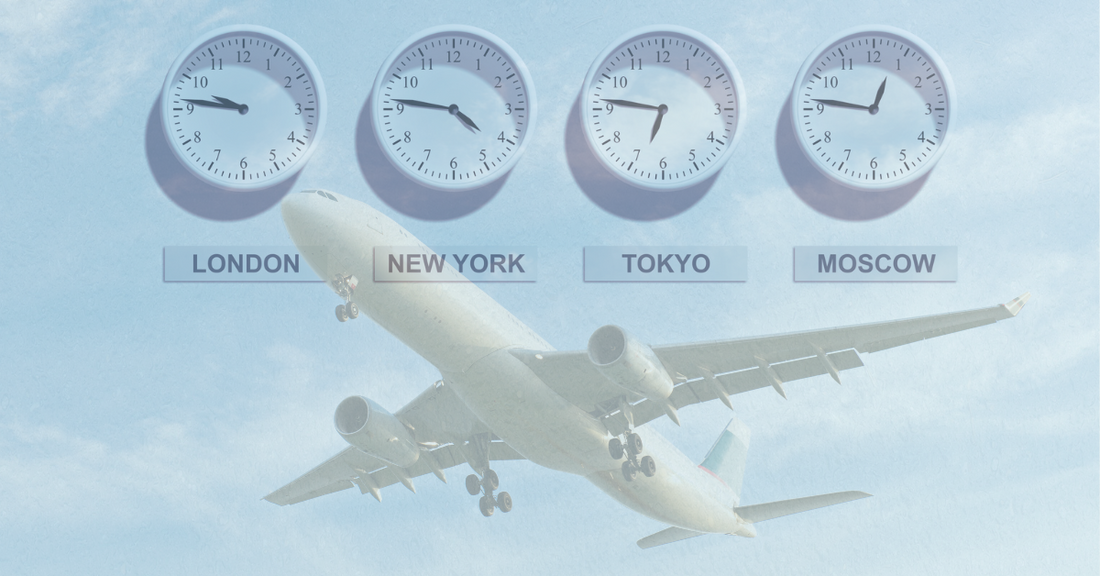
What Is Zulu Time? The Aviation Industry’s Universal Clock
By Jillian C. Novak, CFI
As a Certified Flight Instructor, I often see student pilots have a lightbulb moment when they finally get Zulu time. If you’re early in your training, you’ve probably seen it on METARs, TAFs, flight plans, and maybe even your FAR/AIM—and you’ve probably asked: “Why am I using a time zone I’ve never been to?” Many student pilots have that moment when everything clicks, and they finally understand what Zulu time is.
Here’s the thing: Zulu time isn’t just a formality—it’s a cornerstone of aviation communication, planning, and safety. And once you understand it, your entire preflight process will start to feel more professional and predictable.
Let’s dive into what Zulu time is, why we use it, and how to master it as a student pilot.
What Is Zulu Time, Exactly?
Zulu time is the aviation term for Coordinated Universal Time (UTC)—the one, unchanging standard that doesn’t shift with seasons or time zones.
Why do we call it “Zulu”? The letter Z represents the zero time zone (UTC), and in the phonetic alphabet, Z is “Zulu.” So when you see 1300Z, that simply means 1300 UTC, or 1300 Zulu.
Whether you're on the East Coast of the U.S., flying over the Rockies, or reading a NOTAM in Alaska, Zulu time stays the same. And in aviation, that’s the kind of consistency we need.
Why the Aviation Industry Relies on Zulu Time
Imagine the chaos if every airport, weather station, and pilot operated on local time. A METAR issued at 1600 in California and another at 1600 in New York would be three hours apart—but both would look identical. That’s a problem.
Zulu time gives us a shared, universal clock. Everyone from dispatchers to student pilots to international ATC centers uses it. It removes ambiguity and keeps everyone synced, no matter where they are on the globe.
Where You'll See Zulu Time as a Student Pilot
Here are the most common places you’ll encounter Zulu time during your training:
METARs and TAFs
Weather reports use Zulu exclusively. A METAR timestamp like 121753Z means it was issued at 17:53 Zulu on the 12th.
Want a shortcut? Our Pre-Tabbed FAR/AIM includes weather decoding references, making it easy to cross-check timestamps and validity periods without flipping through pages.
Flight Plans
Whether you’re filing a VFR or IFR flight plan, your proposed departure time (ETD), route, and ETE all reference Zulu.
This is where a solid flight planning strategy comes in handy, especially when you're working out your departure times, fuel burn, and checkpoints in Zulu.
Navigation Logs
Your CFI might have you convert all local times—departure, checkpoints, and estimated arrival—to Zulu. This can be tricky at first, but it’s a habit you’ll be grateful for later.
NOTAMs and ATIS
Temporary runway closures or airspace restrictions are published in Zulu. ATIS broadcasts include a timestamp to show how current the weather info is—again, always Zulu.
How to Convert Local Time to Zulu Time
This is where many new pilots get confused about what Zulu time is,, especially when daylight saving time (DST) is in effect.
Here’s a quick reference for U.S. pilots:
|
Time Zone |
UTC Offset (Standard Time) |
UTC Offset (Daylight Saving Time) |
|
Eastern |
UTC -5 |
UTC -4 |
|
Central |
UTC -6 |
UTC -5 |
|
Mountain |
UTC -7 |
UTC -6 |
|
Pacific |
UTC -8 |
UTC -7 |
Example:
You’re in Central Time during daylight saving (UTC -5), and it’s 2:00 PM.
Zulu time = 2:00 PM + 5 hours = 1900Z
Pro Tip:
Your EFB (like ForeFlight or Garmin Pilot) usually displays Zulu by default. But I recommend you still learn the manual conversion—it’s a great skill to have, and instructors will ask you to demonstrate it on cross-country flights or during checkride prep. I personally keep a watch face on my smartwatch that displays UTC and local time, but a little mental subtraction never hurts to practice, either!
Get Comfortable Thinking in Zulu
Here are a few tips I give all my private and instrument students:
- Set your watch or phone to Zulu as a secondary clock.
- Label your nav logs and kneeboard notes in Zulu as a default.
- Say Zulu times aloud during flight planning to build familiarity.
Over time, you’ll start to “think in Zulu”—especially if you keep using it consistently during preflights and solo flights.
Why This Matters in the Real World
Zulu time isn’t just a training tool—it’s how aviation works. Commercial pilots use it daily. Dispatchers file flight plans in Zulu. Controllers coordinate flights across time zones in Zulu.
Fluency in what is Zulu time proves you pay attention to details and have the discipline to think globally. These are the kinds of habits that help you grow from a student pilot into a confident, competent aviator.
Wrapping Up: Start Using Zulu Now
It might seem like a small thing, but mastering Zulu time early on will save you confusion down the road—and impress your instructor, too.
If you're still building your ground school toolkit, check out our:
- Pre-Tabbed FAR/AIM – Quick access to all the regulations and aeronautical information you'll need.
- Private Pilot Bundle – Everything you need to succeed on your PPL checkride from day one.
Got questions about Zulu or flight planning? Send me a message or browse our learning resources—we're here to support your journey.
Fly safe, and see you at 1400Z.
By Jillian C. Novak, CFI
Northstar Aviation References brings you the Pre-Tabbed ASA FAR/AIM, DIY tabs for your FAR/AIM and other pilot resources so that you can more easily study the regulations that form the foundation of your flying career or hobby. Have any questions? Check out our FAQs page or contact us. Check out other blog posts here.
